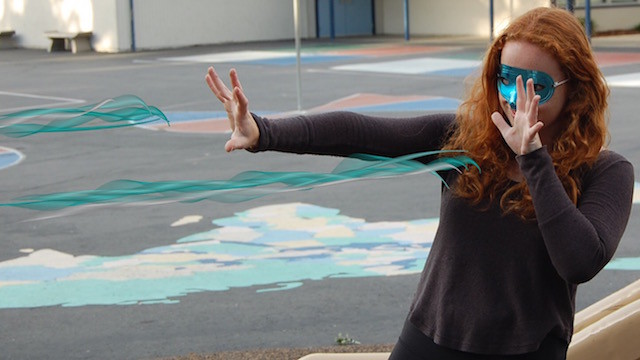My version of the superhero project connected to themes we had worked with throughout the school year: climate change, nutrition, global human impact, social justice, biotechnology, engineering and human health topics. Because I envisioned this as a culminating project to end our year, I knew students would have the skills, content knowledge, and confidence to manage the many phases of the project and engage with their ideas in a meaningful way. I also felt that this would address a sense of frustration I found my students sharing with me throughout the year as they learned more about global problems over which they had no political voice for change. This project gave students the opportunity to envision and experience what it feels like to be change-makers in real time.
Using graphic organizers and the KQED Art School video clips, students were tasked with:
- Choosing a science-related issue or problem they wanted to address or solve, either on their own or in pairs or trios, writing a short rationale for why they chose that issue, and explaining the connection to science.
- Creating a superhero that could help solve the problem. Students filled out a list of superhero attributes, and created a graphic or logo and a costume that they described in writing and through sketches.
- Designing and make a superhero costume to wear in the community while performing some action that their superhero might do to help solve their issue. We spent time planning this piece together so that students could identify an action that was most appropriate to their problem and fit in with their own interests, personality and community culture, as well as to help ensure safety and appropriateness. This community action can be done within school grounds or in the local neighborhood.
- Reflecting in writing upon their community action and the overall science superhero project experience.
- Share their work with us. Students had time to collaborate, share, brainstorm, and revise during class throughout the project, and we also did a final share-out session after they completed their work. Most students opted to do an informal debrief, while others created a slide presentation or showed video footage taken at their community action event.
This project gave me a window into the very mature priorities of our children, who are living in an uncertain time. Topics ranged from endangered species and pollution themes to DNA data security, bioengineering, and mindfulness and healthy living strategies for a more balanced and happy life.
Although my general project outline was specific about product, the delivery method was left deliberately vague. As a result, students filled in the blanks with creative ways to show their costumes, logos, and community action work. I received video projects that utilized a wide variety of programs and apps, notebooks and photo albums, as well as audio files and artwork in different mediums, shapes and sizes. I loved that students felt confident and excited to intentionally engage in each aspect of their project.
This project was inspired by a great experience I had working with educators and teaching artists in our community and I implemented it right away and let me students take things in whatever direction they wanted to go. Now that I have completed my pilot run, I can see that my students would benefit from more planning and collaboration time together in class as they formulate their initial ideas and their community actions. I’d also like to think of a way for us to share the work with each other and the school community. I’m looking forward to hearing how you help your students to reveal their inner superheroes!
